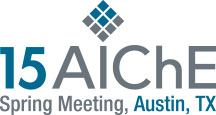

Ethylene producers have faced the challenge of feedstock contaminants for decades. Mercury is one of the contaminants often present in ethylene plant feeds, however, the level, as well as type of mercury present, varies substantially in different hydrocarbon fractions and also in different parts of the globe. This paper will illustrate how mercury removal can benefit the ethylene plant's safety, operability and environmental performance. There are several options for, as well as potential locations for mercury removal in an ethylene plant - the benefits of each of these options will be reviewed. In addition, this presentation will cover the requirements for new mercury furnace emission regulations scheduled to go into Jan 2016 in the United States, and how these compare with current regulations in Europe.
This paper will also describe a total mercury removal solution implemented in an ethylene plant in Berre, France. Installed in 2013, this system is designed to remove mercury from both the cracked gas dryer feed and from the C3 and heavier stream bypassing the demethanizer and feeding the depropanizer directly. Results from monitoring the system's performance, and the analytical methods used, will also be described.
